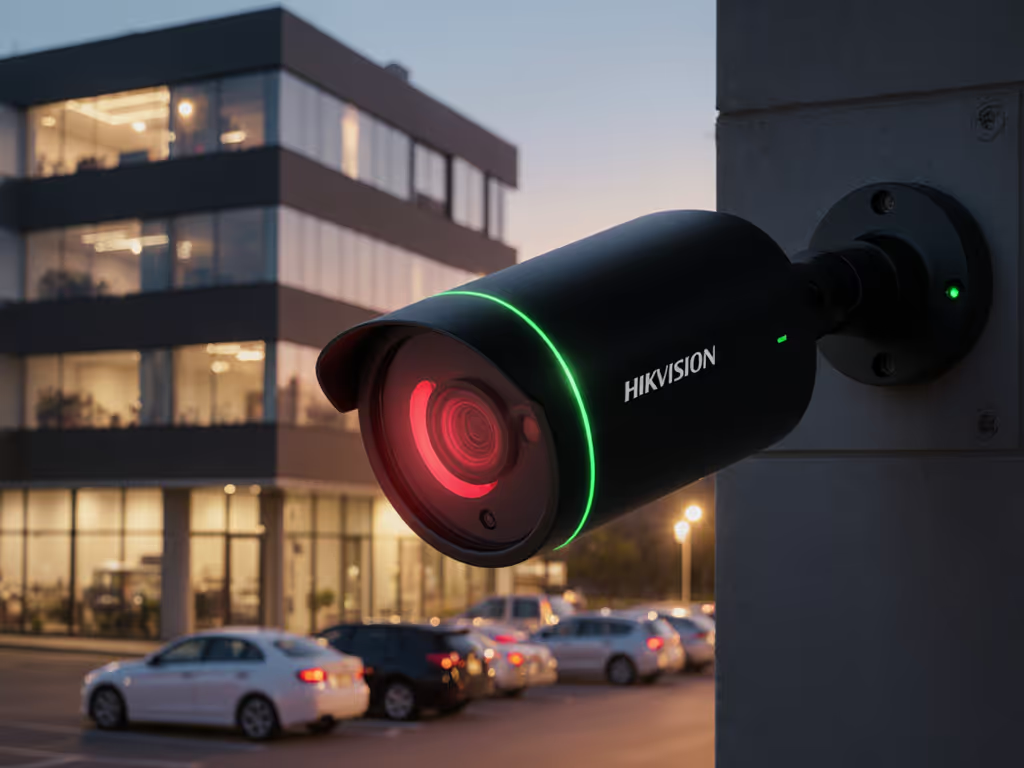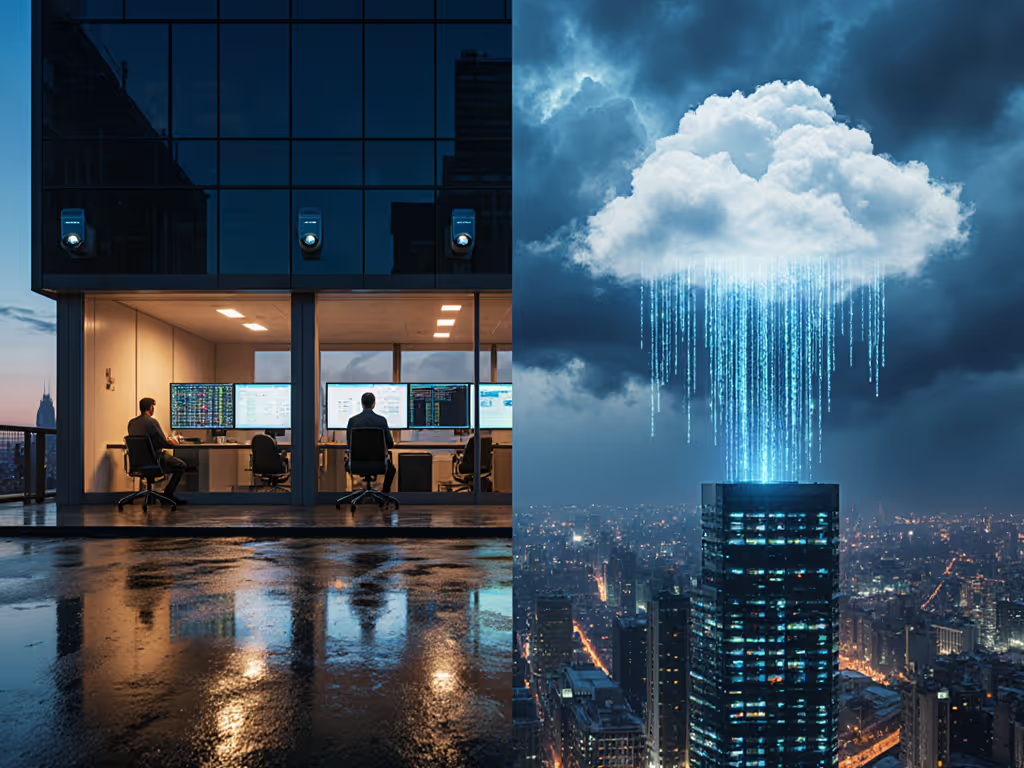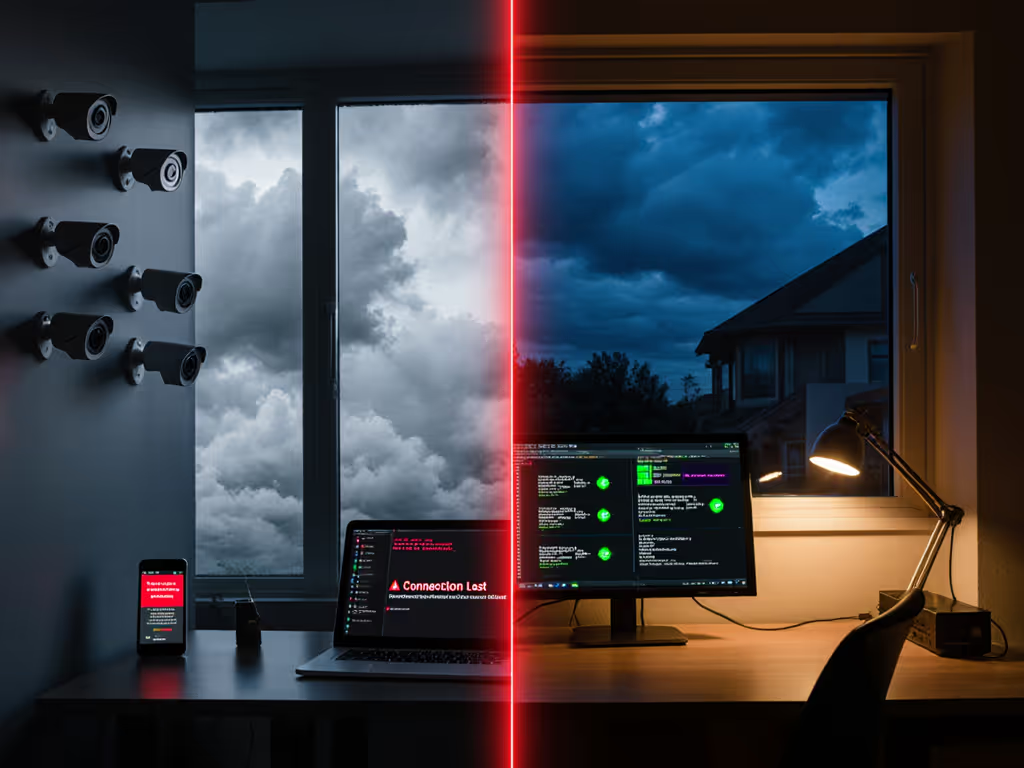
Edge Computing Security Architecture: Solve False Alerts

Like most homeowners, I used to drown in false alerts from trees swaying in the wind and headlights sweeping across my porch. It wasn't just annoying, it made me miss real threats. That changed when I shifted to a decentralized video processing approach with a thoughtful edge computing security architecture that processes footage where it's captured. No more cloud trips for basic analysis. The result? Fewer false positives, faster response times, and privacy that doesn't feel like an afterthought. Control is a feature.
Why do my security cameras keep sending false alerts?
Cloud-dependent systems create false alerts through what I call "data oversaturation." Cameras send raw video to remote servers, where AI models trained on generic datasets struggle to interpret your unique environment. A fluttering leaf triggers person detection because the model wasn't trained on your maple tree in autumn. These systems prioritize broad coverage over contextual understanding, a critical design flaw. For a deeper dive into how intelligent analytics cut noise, see our Video Content Analysis guide.
Threat-model framing starts here: your home isn't a data farm. It's a specific environment with predictable patterns. Traditional cloud AI treats every pixel as equally important, wasting bandwidth on irrelevant motion while missing subtle signs of actual threats. A neighbor's doorbell footage of our street recently ended up in a viral group (faces and plates exposed), because frictionless sharing took priority over contextual awareness.
How does edge computing security architecture actually reduce false alerts?
Edge AI deployment solves this by processing video locally, where context matters most. Here's the precise mechanism:
- On-premise analytics infrastructure runs lightweight neural networks directly on your camera or NVR, filtering out irrelevant motion before it ever leaves your property
- Local processing optimization tailors detection to your specific environment: your oak tree doesn't trigger alerts after the system learns its movement patterns
- Distributed security systems share only meaningful metadata (like "person detected at front gate") rather than full video streams
Principle-based guidance suggests: if your camera can't distinguish between a raccoon and a burglar on-site, it will never do better after compressing and transmitting the footage. Processing at the edge creates a critical filter layer that cloud systems lack, keeping your notifications meaningful. We compare on-device AI vs cloud analysis for real-world reliability and false alert reduction.
Control is a feature.
Won't local processing produce less accurate detection than cloud AI?
This is the biggest misconception. Cloud systems feel more powerful because they use massive computing resources, but for security purposes, relevance beats raw power every time. Modern edge AI chips (like those in recent camera systems) run specialized models that excel at your environment:
- On-device person/vehicle differentiation without needing internet access
- Context-aware filtering that learns what's normal in your yard (e.g., "the dog triggers motion between 7 to 8 AM")
- Immediate response without cloud latency, so alerts arrive while the person is still on your property
Risk-to-control mapping shows that cloud-based systems actually introduce more failure points: internet outages, bandwidth throttling, and privacy risks from constant data transmission. I've seen homeowners with "smart" systems miss package thieves because their cloud service was down during peak delivery hours.
In contrast, truly local systems maintain functionality through network disruptions, exactly when you need them most. The privacy benefit is clear: fewer false alerts mean fewer clips stored, less data exposure, and reduced liability.
How does this approach improve privacy while reducing false alerts?
This is where privacy and reliability reinforce each other, my core belief after years designing camera systems. Decentralized video processing creates a virtuous cycle:
- Data minimization by design: only meaningful events trigger recording
- Localized encryption applied at the source, not as an afterthought
- Retention policies that automatically purge non-events
Consider this scenario: a conventional cloud system records 24/7, creating thousands of clips of empty driveways. Each clip represents a potential privacy leak. An edge-based system records only when a relevant event occurs, reducing your data footprint by 90% or more. See our comparison of cloud vs local storage to align privacy goals with your retention setup. Less data collected means fewer opportunities for leaks.
Collect less, control more; privacy is resilience when things go wrong.
This isn't just theoretical. After rebuilding my setup with local NVR, per-camera encryption, and strict retention, I gained peace of mind and reliability. The system rarely alerts anymore, but when it does, it's always worth checking.
What practical steps can I take to implement this today?
Moving toward an effective edge computing security architecture doesn't require replacing your entire system. Follow these actionable steps:
- Audit your current setup: Count how many false alerts you receive daily. If it's more than 2 to 3, your system is oversaturated
- Prioritize local processing: Look for cameras/NVRs that offer on-device AI without mandatory subscriptions
- Fine-tune detection zones: Most systems allow precise activity areas, use them to exclude problematic zones like street-facing windows
- Set strict retention policies: Auto-delete non-event footage after 24 to 48 hours to minimize data exhaust
- Verify encryption standards: Ensure footage is encrypted at rest and during processing, not just in transit For step-by-step hardening, use our 2025 guide to protecting cameras from hackers.
Principle-based guidance always starts with your specific environment. A system that works for a city apartment will differ from a rural property, but the core philosophy remains: process where the data lives, minimize what you keep, and maintain control at every step.
Final thoughts: Building security you can trust
The goal isn't perfect detection: it's meaningful detection. When your system stops overwhelming you with noise, you start noticing the signals that matter. A well-designed edge computing security architecture gives you fewer alerts that you actually need to see, with evidence you can trust.
This approach transformed my own home security from a source of notification fatigue to a reliable tool that respects both my privacy and my time. Remember: every unnecessary alert erodes trust in your system. Every piece of excess data creates unnecessary risk.
If you're ready to explore how edge-based systems could solve your specific false alert challenges, consider researching solutions that prioritize local processing and transparent data practices. Look for documented testing methodologies that prove real-world accuracy, not just marketing claims. The quiet moments between alerts should be your system's greatest feature.
Related Articles




